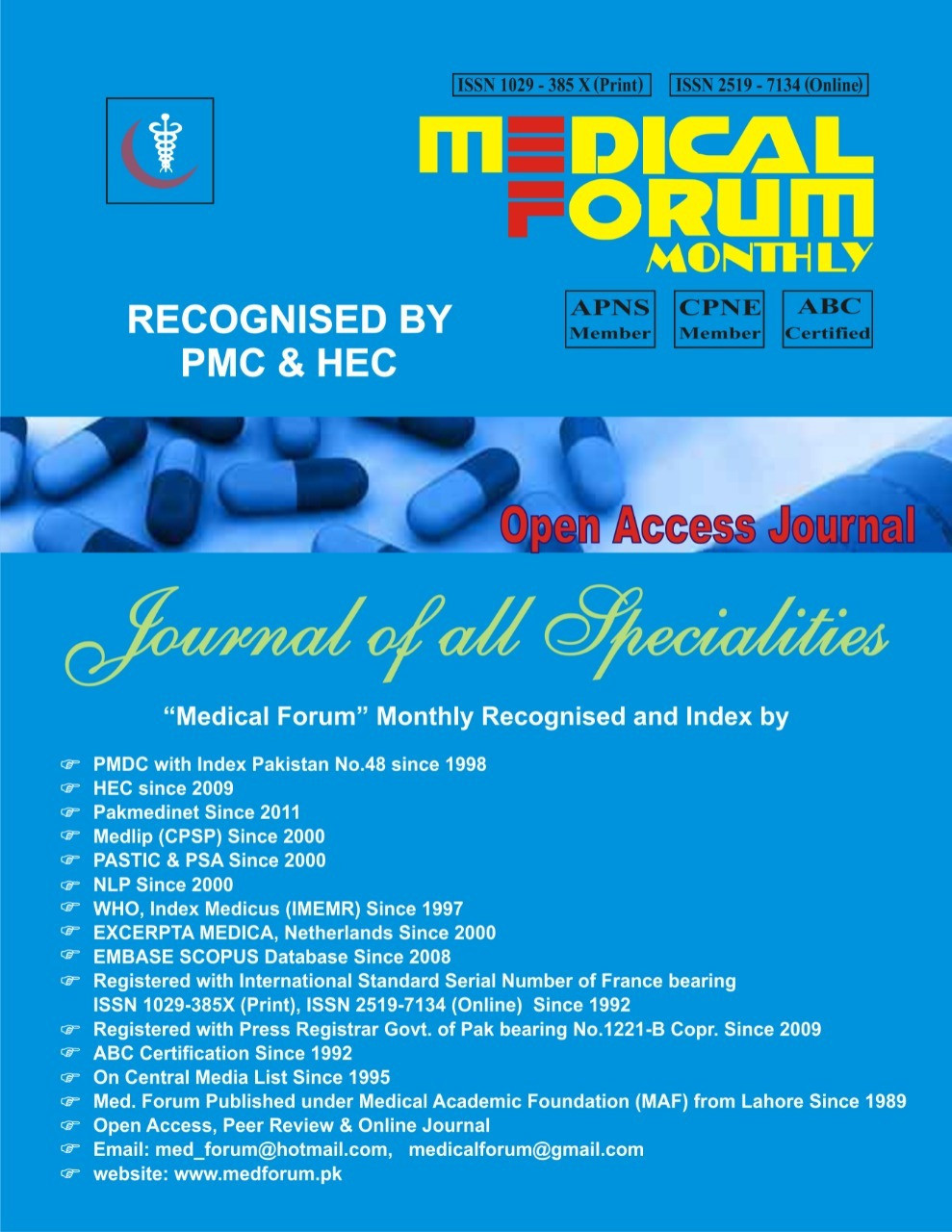
12. Experience of Cervical Spine Injuries in Children and the Treatment that Follows in Tertiary Care Hospitals
Muhammad Idris Khan, Adnan Munir, Sajjad Ullah and Sajid Mehboob
ABSTRACT
Objective: To assess the incidence, treatment modalities and outcomes of damage to the cervical spine in children within a tertiary care hospital, with a focus on refining clinical protocols and enhancing the overall quality of care.
Study Design: A prospective and observational study.
Place and Duration of Study: This study was conducted at the Department of Neurosurgery Khyber Teaching Hospital from Jan 2018 to December- 2023.
Methods: A thorough examination of pediatric patients with cervical spine injuries was conducted at Khyber Teaching Hospital, a prominent tertiary care hospital. The study encompassed a total of n = 90 patients, all cervical injuries presenting to the hospital from 2018 to 2023. Variables such as age, injury mechanisms, cervical spine injury levels, neurological deficits, treatment approaches (surgical and conservative), and six-month post-treatment outcomes were assessed.
Results: There were 40 females and 50 males included in the study, constituting a total population of 90. Interestingly, 46% of patients presented with lower cervical spine injuries (C3 – C7), while 54% sustained injuries in the higher cervical spine level (C0 – C2). Falls were identified as the predominant cause of cervical spinal traumas, followed closely by motor vehicle accidents. Among the treatment groups, the highest fatality rates were observed in ‘ASIA’ group A and B. Fatality outcomes were significantly influenced by the neurological state of the individual before treatment and level of cervical spine involved. A notable variability in pre-operative and post-operative neurologic results was observed, as evaluated by ‘ASIA’ ‘scale’.
Conclusion: In some individuals, high cervical spine injuries, and incidents involving high-energy impact trauma emerged as independent risk factors associated with heightened fatality rates. Furthermore, compared to cases with incomplete neurological abnormalities, instances featuring complete neurological disability exhibited a higher fatality risk.
Key Words: Pediatric Trauma, Cervical Spine Injuries, Tertiary Care Hospital, Treatment Outcomes, Morbidity, Fatality, Injury Mechanisms
